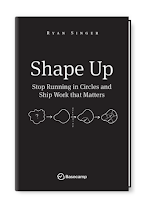2 Cents on Github Co-Pilot

Github Co-Pilot is in high hype right now. Co-pilot is an IA/ML tool that allows engineers, coders, in general, to get more productivity from their IDEs and Editors. Right now co-pilot is on early access, I had to subscribe and wait for +3 months to get my access. There are things that need to be improved for sure but overall I can tell it's a pretty cool and yet useful piece of technology. Of course, it raises ethical and IP concerns. Like would private secret source code be used from one company to another? In the land of the AI/ML we never know what will happen so I did not actually use for Real code, to be safe I did not even use it on my main IDEA (IntelliJ for Java) - I did it in VSCODE where I used it much less and that sense I could isolate from the rest of my personal projects. I have a SlideCast with some thoughts and later there is a live demo with some cool co-pilot in action.


















